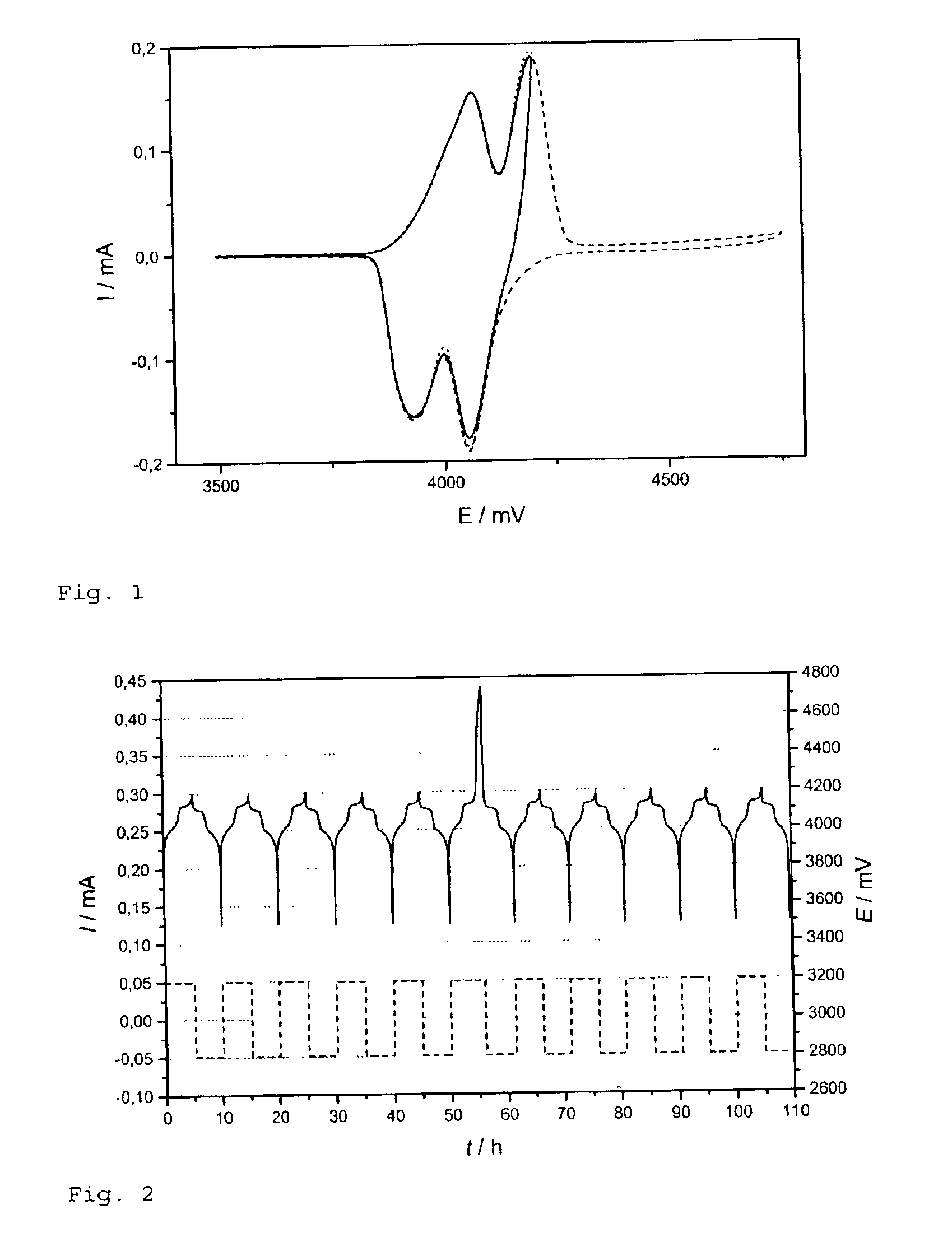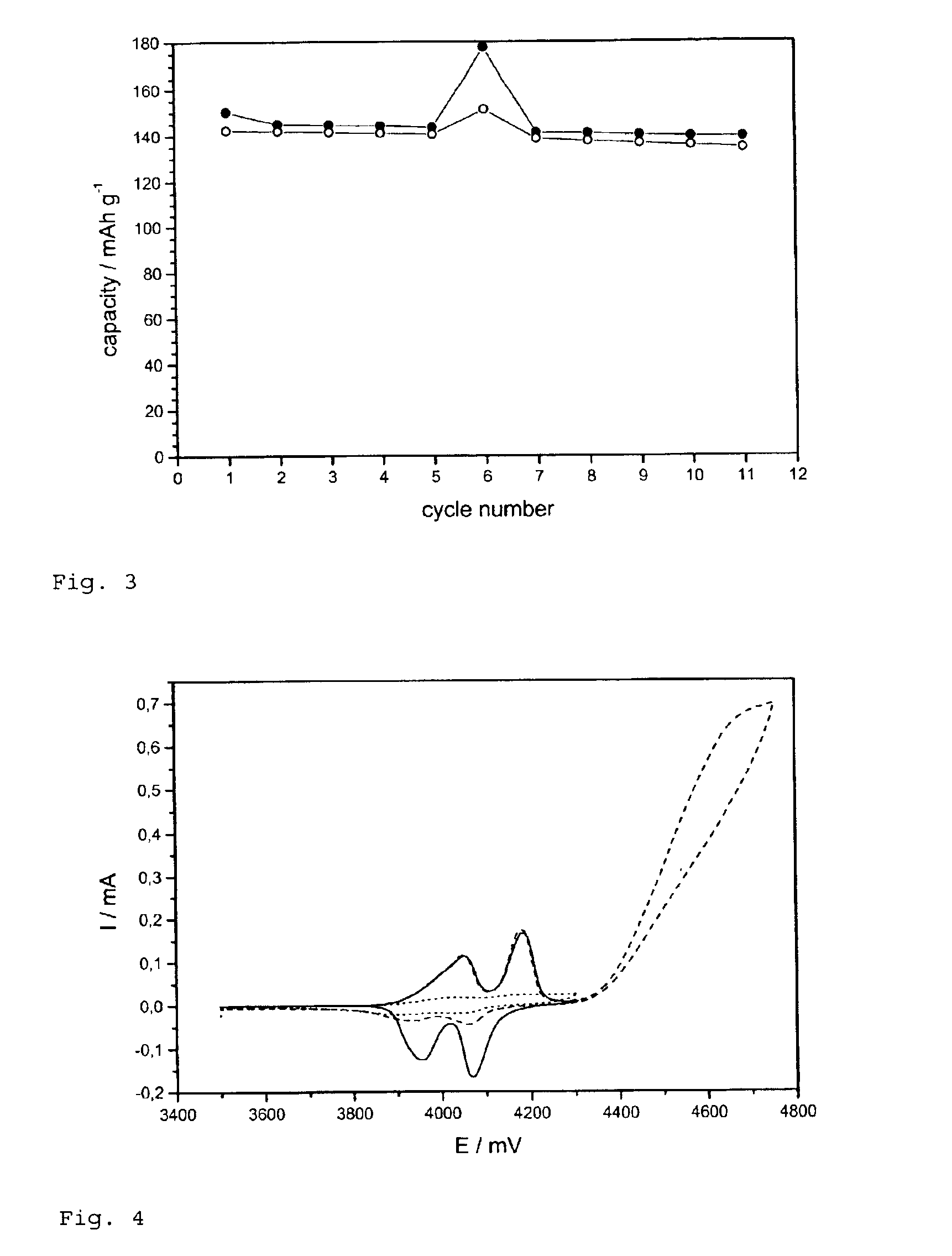Rechargeable lithium electrochemical cell
a lithium electrochemical cell and rechargeable technology, applied in the direction of non-aqueous electrolyte cells, cell components, electrochemical generators, etc., can solve the problem that the effect of filming on the electrode cannot be detected
- Summary
- Abstract
- Description
- Claims
- Application Information
AI Technical Summary
Benefits of technology
Problems solved by technology
Method used
Image
Examples
example 1
Prior Art
[0034]An electrode was formed by mixing 85% by weight LiMn2O4, 10% by weight carbon black (Degussa Printex XE2) and 5% by weight polyvinylidenedifluoride (PVdF). The mixture was stirred with 2 mL of N-methyl-pyrrolidinone and painted on a titanium mesh. The electrode was dried and pressed.
[0035]The electrolyte was composed of propylene carbonate and a lithium salt (lithium perchlorate, lithium hexafluorophosphate or lithium trifluoromethane sulfonimide) at a concentration of 1M.
[0036]For electrochemical experiments a glass cell was assembled. Lithium strips served as reference and counter electrodes, which were immersed into 8 mL of the electrolyte.
[0037]The cell was then examined at room temperature with (1) cyclic voltammetry and (2) constant current charge / discharge / overcharge.
[0038]In the cyclic voltammetry experiments, five sweeps were measured in a potential range of 3.5 to 4.2 V to verify the stability of the electrode and the electrolyte for no...
example 2
[0050]A cell in accordance with the invention was produced which was analogous to that described in Example 1, except that it contained an analogous electrolyte, which contained in addition 1% of an unsaturated organic compound. The test conditions were analogous to those given in example 1.
[0051]FIG. 4 represents cyclic voltammograms of the cell in accordance with the invention. During the overcharge up to 4.75 V (broken line) the current increased in all cases showing the electrochemical reaction of the additive. Indication for successful “shut down” filming is evident. By an approximate 90% decrease in peak height in the 7th cycle (dotted line), the overcharge to 4.75 V parts of the electrode became electrochemically inactive. At these parts, subsequent oxidation of the electrolyte during following overcharges should be prevented.
[0052]FIG. 5 represents the charge / discharge of the cell in accordance with the invention. The cathode could withstand an overcharge of 1400% without re...
PUM
 Login to View More
Login to View More Abstract
Description
Claims
Application Information
 Login to View More
Login to View More - R&D
- Intellectual Property
- Life Sciences
- Materials
- Tech Scout
- Unparalleled Data Quality
- Higher Quality Content
- 60% Fewer Hallucinations
Browse by: Latest US Patents, China's latest patents, Technical Efficacy Thesaurus, Application Domain, Technology Topic, Popular Technical Reports.
© 2025 PatSnap. All rights reserved.Legal|Privacy policy|Modern Slavery Act Transparency Statement|Sitemap|About US| Contact US: help@patsnap.com



